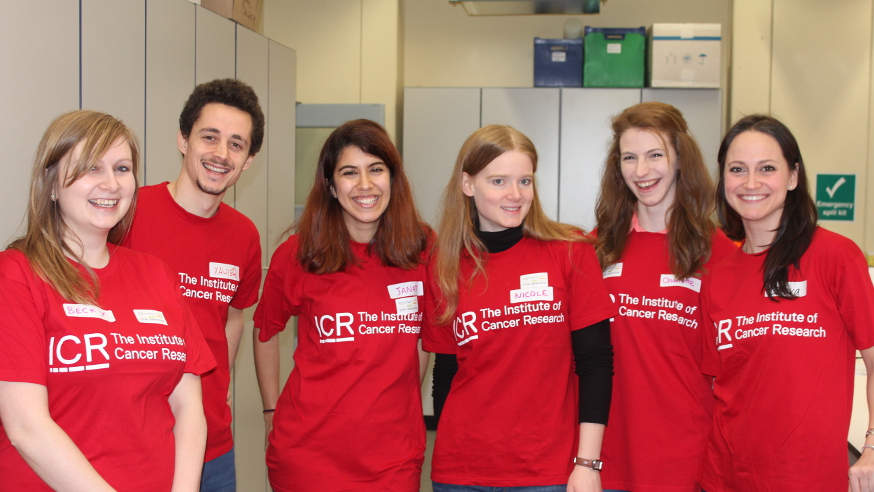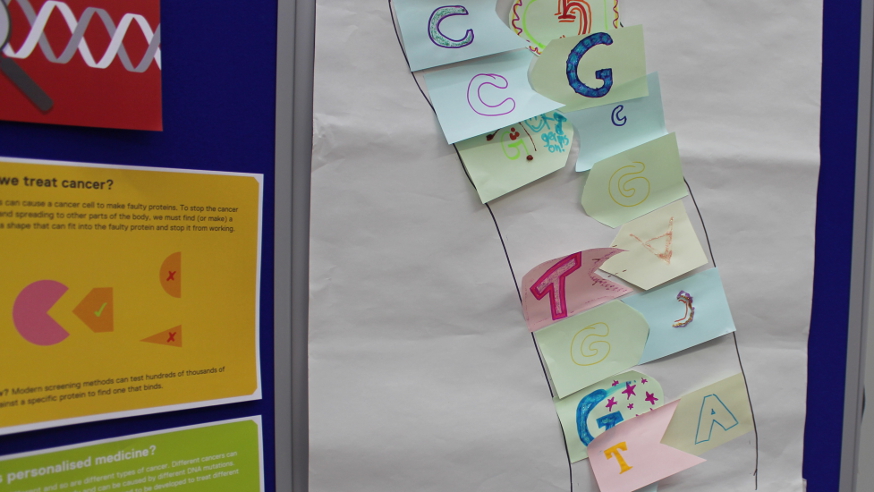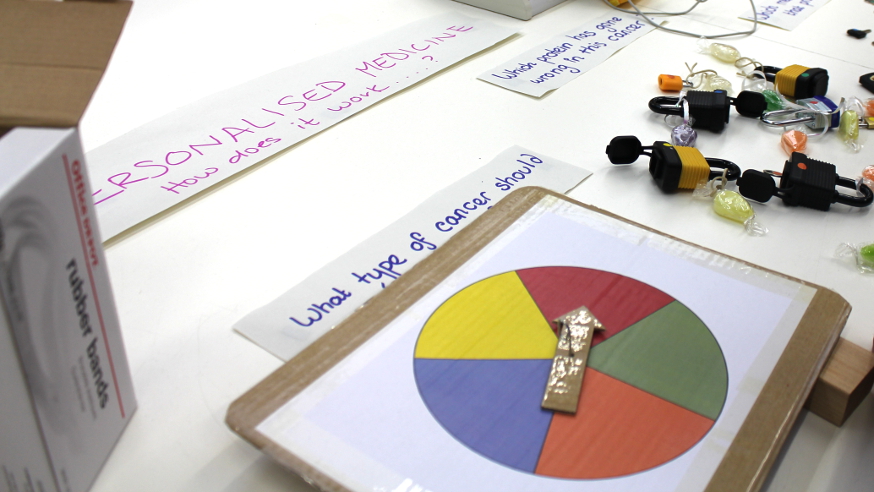Last Saturday, on the first warm day of spring, I found myself along with 18 other staff members and students from The Institute of Cancer Research in the green surroundings of Egham. We were here to take part in the Royal Holloway Science Festival. As ‘special guests,’ the ICR shared our research with over 300 families and children who had been drawn to the event by the promise of sunshine, science and hands-on fun.
We knew that we were competing for attention with some impressive players – the Bloodhound supersonic car team, an exploding volcano and a gyrfalcon called Dora. We had to up our game to engage young people with our research.

Preparing for the event, Becky Cook in Academic Services took the lead, chairing two meetings with our team of volunteers. Everyone from PhD students, clinical trial coordinators and science officers came together to talk about the event. We decided on a three-pronged set of activities. We would be the DNA Detectives, here to break the code, find the clues and reveal cancer’s secrets.
Break the code
First, we needed to explain what DNA was – with an activity involving spotting the hidden code word on our DNA posters, cleverly designed by Jan Czarnecki. Once they had read the posters, learnt about DNA, and spotted the word, people received a DNA Detective sticker, and the chance to add a colourful base to our collaborative strand of DNA.

This was a popular activity, with many children (and some parents) creating beautifully designed As, Ts, Cs and Gs. Most had heard of DNA, but many of them were learning about how it worked for the first time. The budding scientists who decorated their bases with the entire contents of a glitter glue pen, or who carefully drew Spiderman merging with Superman, certainly proved that they have the imagination and positive attitude to succeed in research. (Although, we did have to disappoint one young girl who wanted to know if her DNA, too, contained glitter.)
Find the clues
Finding the clues was a chance to talk about what causes cancer. Becky Cook and her team developed an activity showing the difference between building a cell with good blueprints, and one with bad. The well-built cell or tissue was represented by a tall Jenga tower. But when the DNA of a cell is damaged, it starts following an inaccurate blueprint. We represented this by sticking the Jenga blocks any old way on top and throwing their weight off with Play-Doh. That was when the cell fell down – representing the spread of cancer.
The activity was certainly the loudest on our bench – the sound of tumbling blocks and gasps as the tower fell down was a great sign that people were getting into the activity. Many of the older children and parents learned a lot about how DNA damage can lead to cancer, something which was first discovered here at the ICR. And the youngest attendees certainly had fun making a mess.

Reveal cancer's secrets
Finally, our budding DNA Detectives came to the third activity – a demonstration of the techniques that go into selecting personalised medicine to treat a person’s cancer. This activity came from Emily Wholey and Dr Laura Danielson, with a spinning wheel of fortune from Xavier Roeseler. This was a great, one-on-one chance to engage young people with the various challenges and opportunities of cancer research.
Learning that each cancer is different, participants spun a wheel to find out what sort of cancer they were treating, represented by a coloured padlock. They then had to search for the right coloured key, or medicine, that would ‘unlock’ the disease, and release a sweet reward from the padlock. Sometimes, it took a few tries to find the right key – just as ICR researchers often find as they search for new drugs.
People really seemed to get a lot out of this activity – cancer treatment is an area that’s touched so many people’s lives, and talking sensitively about the challenges and prospects of cancer drug research was rewarding.
We also found a lot of interest in our leaflets about the real-life DNA Detective work done at the Drug Development Unit, part of our Cancer Research UK Centre at the ICR and The Royal Marsden.

The end of the day found our volunteers tired, hoarse, but happy, having discussed their work with a great variety of people, and had the chance to really engage young people with some of the realities of working in cancer research. Huge thanks go to all the volunteers who I haven’t named here, and roll on 2016!
comments powered by